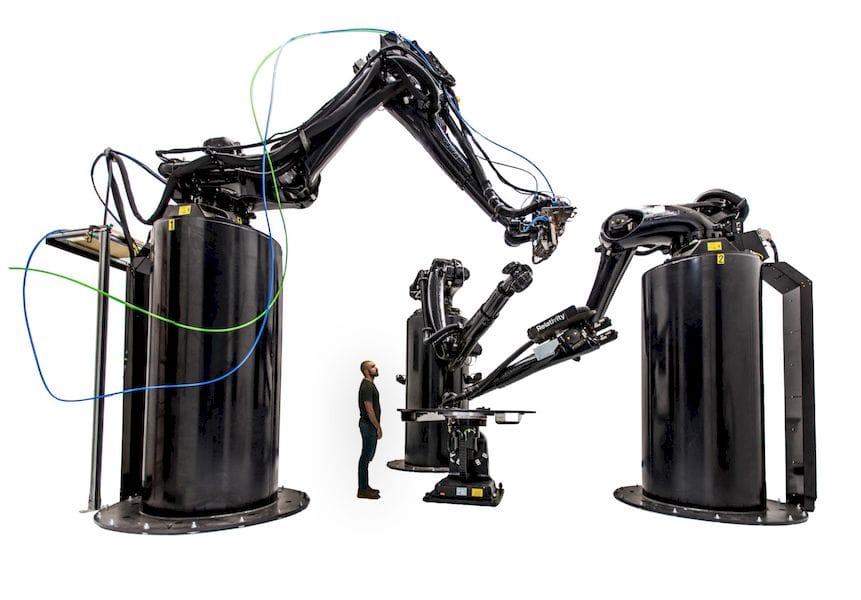
As manufacturing moves more strongly into 3D printing, there is a question about how it will be implemented.
There are two schools of thought here.
One concept is to deploy a large array of general 3D printers, perhaps of different capabilities, that is able to handle arbitrary print requests. This would be very much like one of the current 3D print service bureaus, which operate arrays of 3D printers in this way.
That is a vision of a kind of “anything factory”, which we proposed seven years ago. The “factory” would not require tooling up as traditional manufacturing would do, but instead simply accept print jobs and make stuff as fast as possible.
Low volume manufacturing is the key application here, as 3D printing approaches do have a financial advantage if insufficient parts are needed and they cannot justify the expense of a traditional manufacturing tool-up.
But there seems to be another style of industrial 3D printing evolving, one where a purpose built set of 3D printers is applied to a much more narrow field of action. Instead of “generic” 3D printers that can handle any “normal” request for objects, these machines produce more specific output, typically by industry.
One example could be Stratasys’ Infinite Build Demonstrator, a 3D printer that prints sideways, enabling, theoretically, infinitely long 3D prints. That is, as long as you keep feeding the machine a supply of tasty plastic pellets.
Stratasys is positioning this concept as directed towards the transportation industry, where aerospace companies could 3D print large interior aircraft panels, or for railway equipment manufacturers to print whole segments of train carriage walls.
Another is the Los Angeles based Relativity corporation, who are attempting to build very inexpensive rockets by leveraging 3D printing technology and other technologies. They’ve been able to reduce the part count in their systems from 100,000 to around 1,000, with corresponding decreases in expenses.
How did they do this? They’ve produced a custom-designed large-scale 3D printer they call “Stargate” that fits their unusual needs in the best way. It’s not a machine that you’d be able to purchase for your own needs, and neither would you want to – unless you are producing large rockets, I suppose.
Relativity recently hit a USD$35M investment, suggesting that investors believe their technological strategy is correct – and that includes the purpose-built Stargate 3D printer.
Both of these are examples of this new class of industry-specific 3D printers. They’re large and unusual – and other industries would likely not be interested in them.
Could this be our future: 3D print farms for generic production, and purpose-built 3D print factories for specific industries? I think that could be the direction we’re headed.
Via TechCrunch and Relativity

